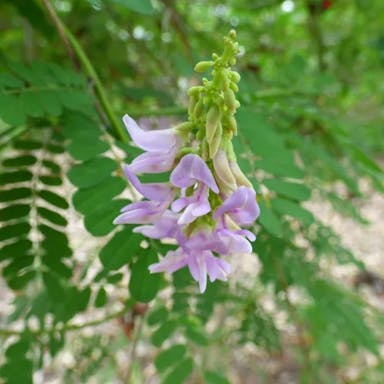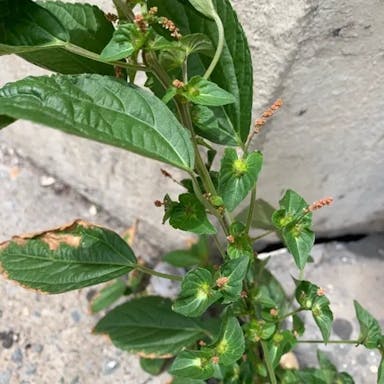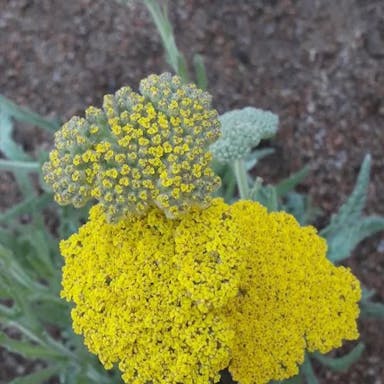For Indian abutilon, watering frequency should be moderate, typically once every 7-10 days during the growing season. This plant prefers well-draining soil, so ensure the soil is moist but not waterlogged. During the dormant period, reduce watering to once every 2-3 weeks to prevent root rot. Check the soil humidity by inserting a finger about 1 inch deep; if it feels dry, it's time to water. Water in the morning to allow excess moisture to evaporate during the day, reducing the risk of fungal diseases. Adjust watering based on environmental conditions such as temperature and humidity to maintain optimal plant health.
Indian abutilon
- Scientific name
- Abutilon indicum
Basic Information
- Malvaceae Family Abutilon Genus Indian abutilon Species
- Malvaceae > Abutilon > Abutilon indicum
- 83%
- The Completeness of This Encyclopedia
Please help us complete the encyclopedia, Terrarium is a encyclopedia service to be completed with everyone in the world. Currently, this page is 83% complete. For more information on how to contribute, please click here.
- Forb/herb
- Shrub
- Height
- 300cm ~
- Flower Color
- Leaf Color
- Anthesis
- summer, fall
- Sunlight Exposure
Full Sun Long hours of sunlight from morning to afternoon Partial Shade A location in the shade of a tree or where either the morning or afternoon is shaded Full Shade A place where there is no direct sunlight
- Full Sun
- Hardiness Zones
This is an indicator to know to which zone each plant can winter. Knowing the zone of each plant gives you an idea of the cold temperature resistance when grown in the ground without a roof. 2: -42.7 to -40.0 3: -39.9 to -34.4 4: -34.3 to -28.9 5: -28.8 to -23.3 6: -23.2 to -17.8 7: -17.7 to -12.2 8: -12.1 to -6.7 9: -6.6 to -1.1 10: -1.0 to 4.4 11: 4.5 to 10.0
- 10
- Cold resistance
- Poor
- Heat resistance
- Excellent
- Habitat of origin
- India
- Growth Rate
- Fast
What is Indian abutilon (Abutilon indicum)?
What is Indian abutilon (Abutilon indicum)
Flower meaning
Indian abutilon thrives in full sun to partial shade, preferring at least 6 hours of sunlight daily. It exhibits good cold tolerance, able to withstand temperatures as low as 25°F (-4°C). During hot summers, it benefits from some afternoon shade to prevent leaf scorch. It is heat tolerant and can endure high temperatures. Indian abutilon's optimum temperature ranges between 65-75°F (18-24°C). Over winter, it should be protected from frost, ideally kept indoors or in a greenhouse. When placing Indian abutilon, choose a spot with bright, indirect light. It can handle direct sunlight but may require some protection during intense midday sun. Providing 6-8 hours of sunlight per day ensures healthy growth and abundant flowering.
Calendar of Indian abutilon (Abutilon indicum)
Calendar
Indian abutilon, also known as Abutilon indicum, is a perennial shrub native to tropical regions of Asia. It belongs to the Malvaceae family and is characterized by its heart-shaped leaves and bell-shaped flowers. The flowers come in various colors such as yellow, orange, and red, adding vibrancy to gardens. Abutilon indicum is commonly referred to as "Indian mallow" and is valued for its ornamental beauty. This plant produces small, round fruits that resemble miniature lanterns when mature. It typically grows to a height of 3-4 feet and is relatively easy to cultivate, making it a popular choice for home gardens. Abutilon indicum is versatile and can thrive in both full sun and partial shade, requiring moderate watering. Its ability to attract pollinators like bees and butterflies further enhances its appeal in landscaping.
How to grow Indian abutilon (Abutilon indicum)
Watering
Indian abutilon thrives in well-draining soil with a pH level between 6.0 and 7.0. It prefers rich, loamy soil that is slightly acidic. Fertilize Indian abutilon with a balanced fertilizer, such as a 10-10-10 formula, in early spring before new growth appears. Apply the fertilizer again in mid-summer to promote continuous blooming. Avoid over-fertilizing as it can lead to excessive foliage growth at the expense of flowers. Monitor the plant's growth and adjust the fertilizer application accordingly. Regularly check the soil quality to ensure it remains well-draining and nutrient-rich. Consider adding organic matter, like compost, to improve soil structure and fertility.
Soil and Fertilizer
Indian abutilon is best suited for potted planting due to its ability to thrive in containers. When potting, choose a container with drainage holes to prevent waterlogging. Use well-draining soil mix rich in organic matter to promote healthy root growth. When repotting, select a slightly larger pot to accommodate the plant's growth. Gently loosen the roots before placing it in the new container. Water thoroughly after repotting to help the plant establish itself in its new environment. Mist the plant occasionally to increase humidity levels, especially during dry periods. Avoid overwatering to prevent root rot. Regularly check for pests and diseases, treating them promptly to maintain the plant's health.
Sunlight and Place
Indian abutilon benefits from regular pruning to maintain its shape, promote new growth, and improve flowering. The best time to prune is in late winter or early spring before new growth appears. Pruning should focus on removing dead, damaged, or crossing branches. Additionally, cutting back one-third of the oldest stems can rejuvenate the plant. After pruning, ensure to clean tools to prevent the spread of diseases. Apply a balanced fertilizer to encourage healthy regrowth. Regular pruning and cutting back will help Indian abutilon thrive and remain vigorous.
Advanced Information of Indian abutilon (Abutilon indicum)
Pruning
Indian abutilon can be propagated through seeds, cuttings, and division. Sow seeds in well-draining soil, keep moist, and provide indirect light. For cuttings, take 4-6 inch stem cuttings, remove lower leaves, dip in rooting hormone, and plant in a mix of peat and perlite. Keep soil moist and provide indirect light. Division involves separating root clumps and replanting in individual pots. Harvest seeds when pods turn brown and dry. Multiplying through various methods ensures higher success rates and faster propagation. Each method has its advantages, such as seeds for genetic diversity, cuttings for quicker growth, and division for maintaining plant characteristics.
Planting and Harvest
Indian abutilon is susceptible to pests such as aphids, spider mites, and whiteflies, which can cause damage by sucking sap from the plant. These pests can lead to yellowing of leaves, stunted growth, and wilting. To prevent infestations, regular inspection of the plant and the application of insecticidal soap or neem oil can be effective. Additionally, Indian abutilon is prone to diseases like powdery mildew and leaf spot. Powdery mildew appears as a white powdery substance on the leaves, while leaf spot causes dark spots with yellow halos. Both diseases can result from poor air circulation and high humidity levels. Proper spacing between plants, adequate watering at the base of the plant, and avoiding overhead watering can help prevent these diseases. In case of withering, it is essential to identify the underlying cause, which could be related to overwatering, underwatering, nutrient deficiencies, or root rot. Adjusting watering practices, providing proper nutrients, and ensuring well-draining soil can help revive a withering Indian abutilon.
Propagation
Indian abutilon typically blooms from late spring to early fall in the United States. The flowers are at their best during the summer months. Blooming occurs once a year, lasting for several weeks. It takes about 2-3 weeks for the flowers to fully bloom. To extend the blooming period, deadhead spent flowers regularly and provide adequate sunlight and water. Maintaining a consistent watering schedule and fertilizing every few weeks can also help promote continuous blooming. Pruning the plant after the blooming period can encourage new growth and potentially lead to a second blooming cycle.
Pests and Diseases
Indian abutilon offers various varieties such as 'Bella Mix,' known for its vibrant colors, 'Tiger Eye,' prized for its unique striped petals, and 'Nabob,' admired for its deep red blooms. When selecting seeds, opt for plump, firm ones without signs of damage. For seedlings, choose those with healthy green leaves and sturdy stems, avoiding any wilting or discoloration. Ensure the roots are well-developed and not root-bound. Prioritize purchasing from reputable suppliers to guarantee quality. Conduct research on specific variety requirements for optimal growth.
Habitat of Indian abutilon (Abutilon indicum)
Habitat
Toxicity of Indian abutilon (Abutilon indicum)
Health Benefits
- edible
- edible
- Toxic
- No toxicity
NO DATA
Toxic for dogs and cats
NO DATA












